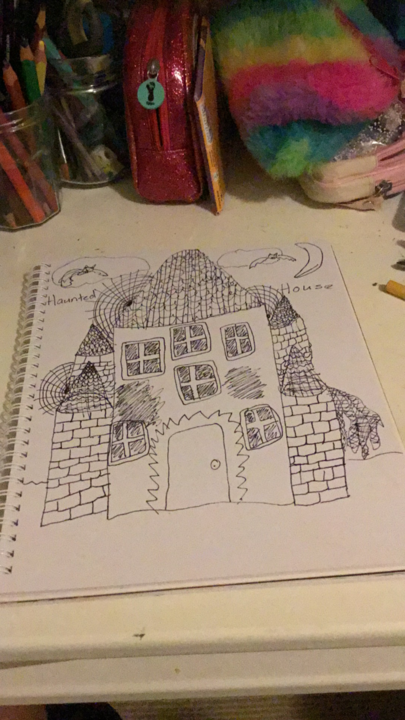Draw a dream that scared you
Draw a dream that scared you using crayons or markers, add colors and details, then write one sentence explaining why it felt scary.



Step-by-step guide to draw a dream that scared you
How I Draw Scary Monsters Step by Step!
Step 1
Place your paper and art supplies in front of you on a flat table or floor.
Step 2
Sit comfortably where you can reach your supplies easily.
Step 3
Close your eyes and picture the scariest moment of your dream for one minute.
Step 4
Open your eyes and choose one single scene from the dream to draw.
Step 5
Lightly sketch the main shapes of that scene with your pencil.
Step 6
Add important details like faces objects or shadows using your pencil.
Step 7
Trace the pencil lines you like with a crayon or marker to make them bold.
Step 8
Fill in the large background areas with colors using your crayons or markers.
Step 9
Add smaller colors patterns or spooky textures to make the scene detailed.
Step 10
Write one sentence at the bottom explaining why the dream felt scary.
Step 11
Erase any extra pencil marks and make small touch-ups if you want.
Step 12
Share your finished drawing and sentence on DIY.org.
Final steps
You're almost there! Complete all the steps, bring your creation to life, post it, and conquer the challenge!


Help!?
What can we use if we don't have crayons or markers to trace and color the dream scene?
If you don't have crayons or markers for steps 6 and 7, use colored pencils, gel pens, watercolor paints, or cut colored magazine paper to glue down as background color and to trace pencil lines from step 5.
My traced lines keep smudging or looking messy when I go over the pencil—how can I fix that?
If tracing in step 6 smudges, wait a minute for the pencil to settle, place a scrap paper under your hand, and retrace only the strongest pencil lines with a crayon or a fine-tip marker to reduce smears.
How should we change the activity for different ages so it's not too hard or too quiet for kids?
For younger kids shorten step 3 to a 15–30 second imagining and let them use big crayons and stickers for steps 4–8, while older kids can spend more time on detailed sketches in steps 4–5 and expand the sentence in step 11 into a short paragraph or comic strip sequence.
How can we make the finished drawing more personal or take the activity further after sharing on DIY.org?
To enhance the drawing, add layered spooky textures like torn tissue or charcoal smudges in step 8, photograph it with dramatic lighting and write a reflective caption for step 12, or turn the scene from step 4 into a mini flipbook showing how the dream changes.
Watch videos on how to draw a dream that scared you
How to Draw Moonlight Dream Scenery Step by Step Drawing for beginners
Facts about drawing and emotional expression
🖍️ Crayons (like Crayola) were first sold in 1903 and are made from colored wax.
🎨 Drawing about scary dreams is a common art-therapy tool to help kids understand feelings.
😴 Most people have 3–5 dreams every night, even if they don't always remember them.
🧠 Most vivid dreams happen during REM sleep, when your brain is highly active.
😱 Nightmares are very common in childhood — around half of kids report them sometimes.
How do I do the 'Draw a dream that scared you' activity with my child?
What materials are needed for 'Draw a dream that scared you'?
What ages is 'Draw a dream that scared you' suitable for?
What are the benefits of doing the 'Draw a dream that scared you' activity?


One subscription, many ways to play and learn.
Only $6.99 after trial. No credit card required



